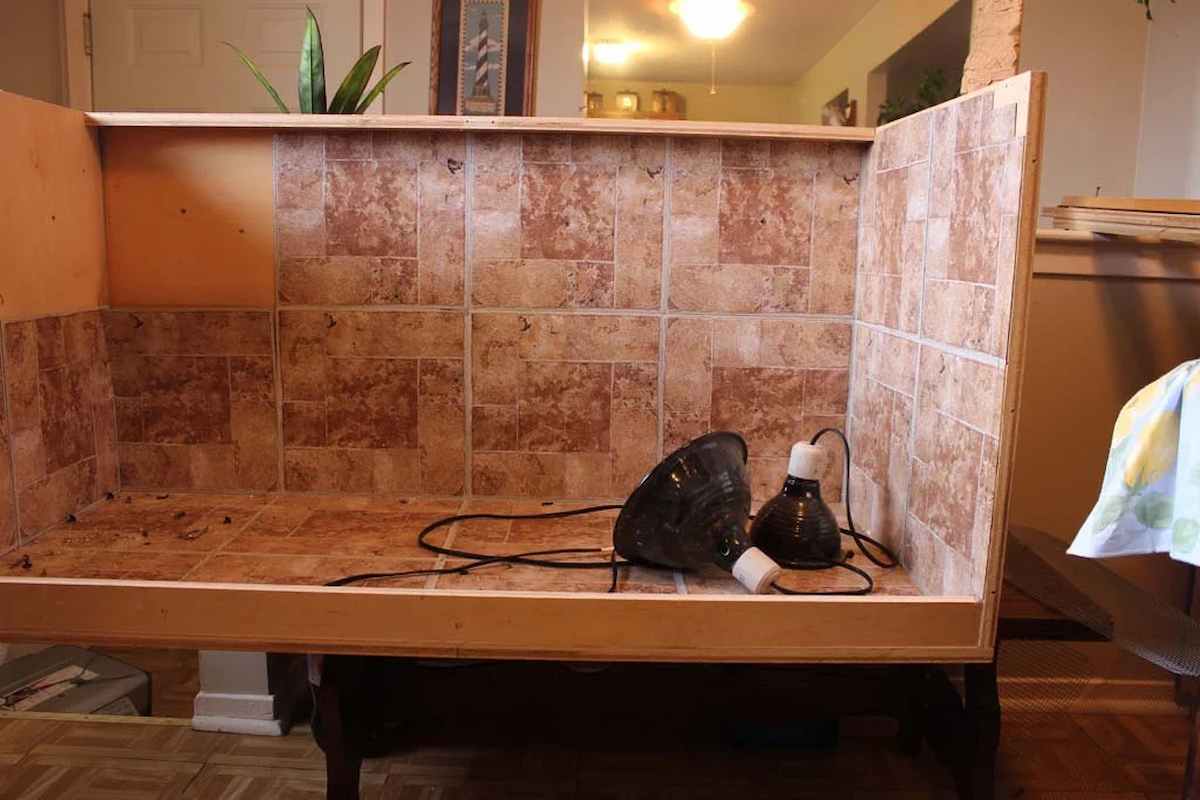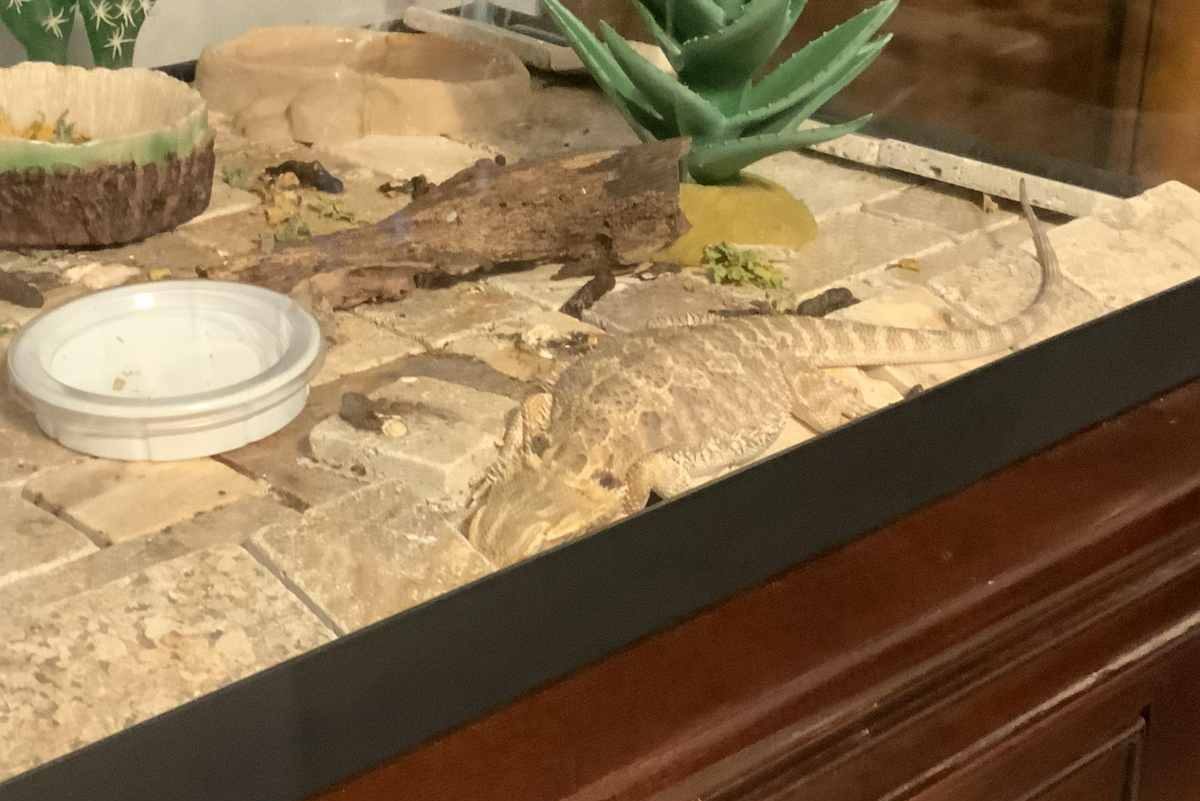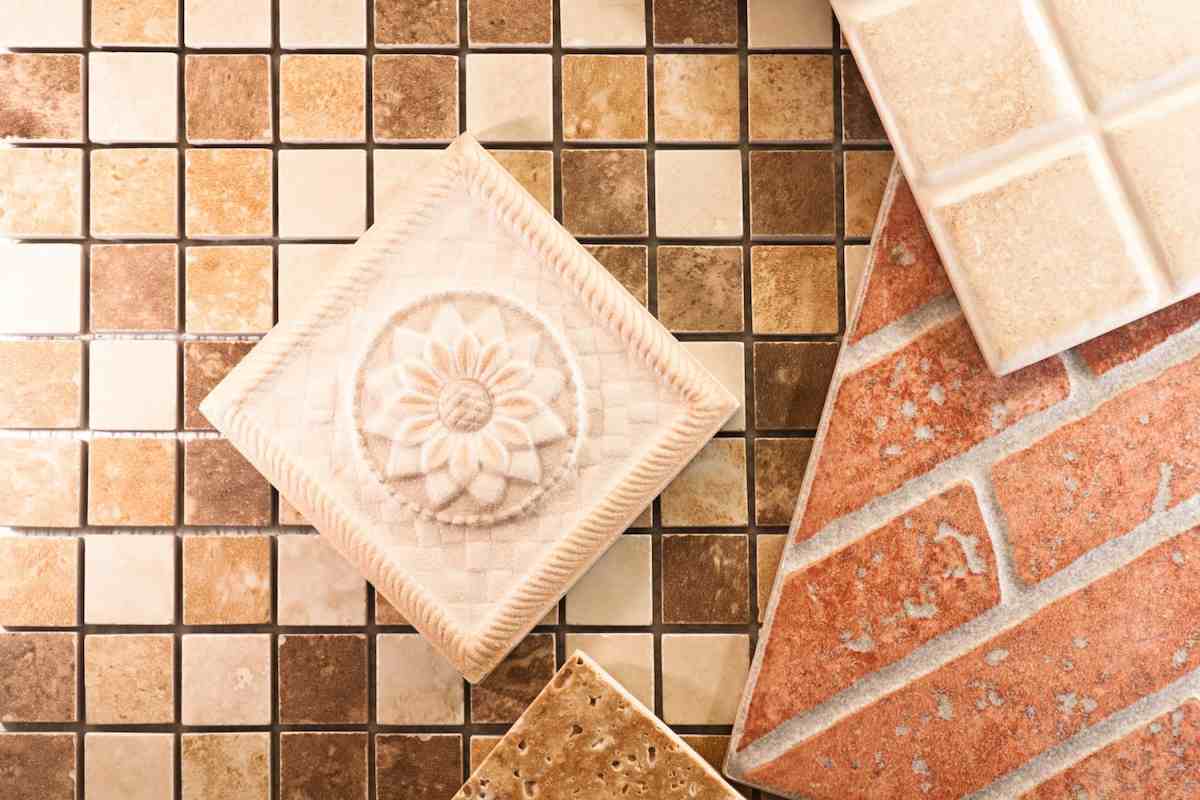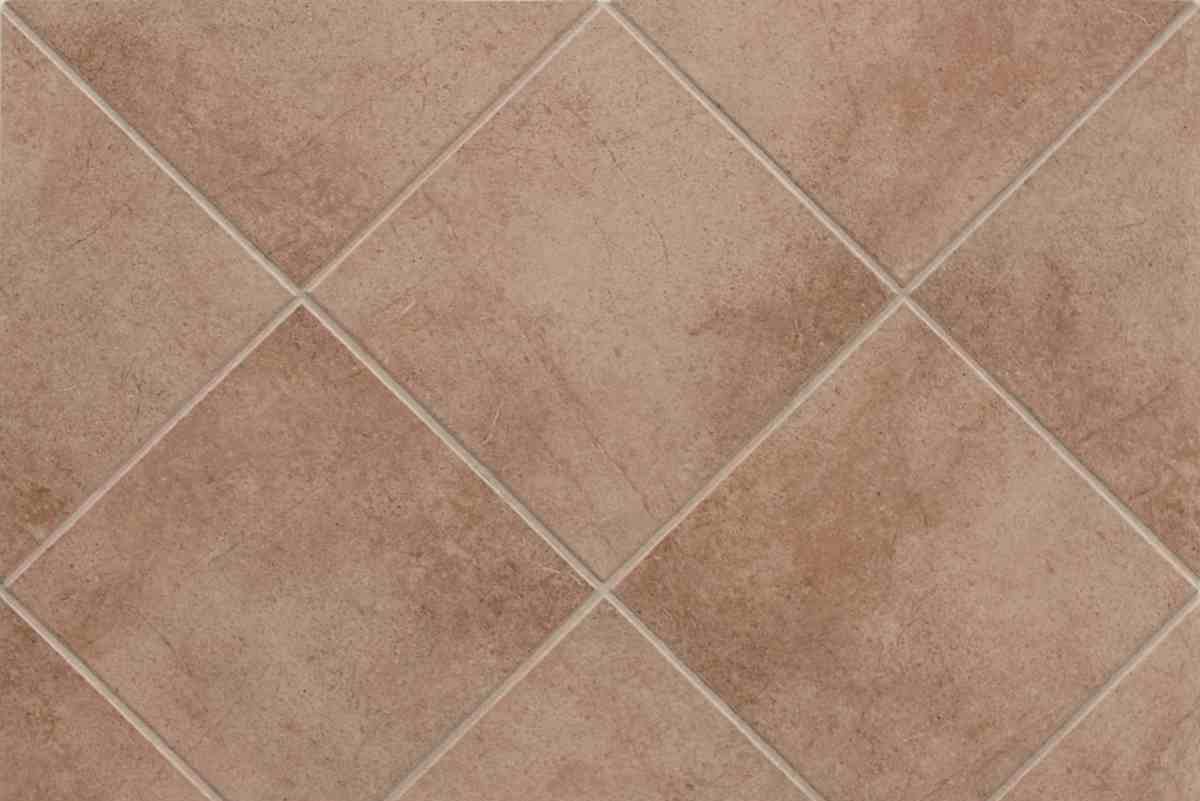Ceramic tile is a material that can be used for the construction of enclosures for bearded dragons. Ceramic tiles have really become one of the most popular choices for bearded dragon cages due to the numerous benefits that they provide for these lizards. Bearded dragons thrive in environments that are warm and dry.
The ease with which owners can keep them up to snuff is yet another key advantage they offer in comparison to alternative substrate choices.
In addition, selecting ceramic tiles as the substrate for your bearded dragon is likely to be the healthiest alternative.
One of the most significant disadvantages of sand and other loose foundations is a medical condition known as impaction. Every species of reptile has the potential to ingest a little portion of its substrate when it gets in the way of capturing its prey.
Over time, the digestive tract of the reptile may become clogged with sand, other particles, and debris, which may result in serious health problems.
Utilize ceramic tiles if you want to avoid this problem and have a lizard that is both healthier and happier.
In addition to this, owners will find it easy to maintain the cleanliness of their ceramic tiles.
It is possible to get rid of any potentially hazardous germs by removing individual tiles, giving them a spot cleaning, or removing all of the tiles and baking them at a temperature of 250 degrees. Either option is valid.

This is a significant improvement over having to remove sand by hand every few months! Let’s take a more in-depth look at the positive aspects associated with building bearded dragon enclosures out of ceramic tiles.
When you think of the natural habitat of a bearded dragon, ceramic tiling is certainly not the first thing that comes to mind. Ceramic tiling is, nevertheless, among the best choices you have for determining the substrate that will be appropriate for your bearded dragons.
Bearded dragons will be basking on ceramic tiles, which can feel quite similar to the rocks that they will be basking on in their native environments.
In addition, they are easy to clean and completely risk-free for bearded dragons. When it is properly maintained, ceramic tile is an excellent substrate option for bearded dragons because it is fully safe and suited for them.
One of the major advantages of ceramic tile is how easy it is to clean and maintain, which is why bearded dragons do so well on this surface. The most difficult part is going to be figuring out how to clean your bearded dragon’s tank on a regular basis using different substrates in a way that won’t stress him out too much.

Your bearded dragon will not be bothered in the slightest if you remove ceramic tiles from its enclosure one at a time in order to clean and dry them before replacing them.
Because they are constructed of ceramic, you can even put them in the oven once a month to ensure that they get a very thorough cleaning.
There are a few more advantages that come along with using ceramic tiles for your pet bearded dragon’s habitat. Ceramic tiling can help keep your bearded dragon’s claws in good shape by providing a surface that is rough enough for them to walk on.
Ceramic tiling eliminates the risks associated with keeping your bearded dragon on sand or other types of loose substrates, which may develop if you utilize those types of substrates. In general, ceramic tile is an excellent choice for a substrate when it comes to bearded dragons.
The installation of ceramic tiles is the step of using this particular substrate for bearded dragon enclosures that is the least complicated and most straightforward. In point of fact, this is one of the aspects that has contributed to this being one of the most popular choices for bearded dragons when it comes to their habitats.
We’ll walk you through the process of installing ceramic tiles in your bearded dragon’s habitat, as well as the steps you need to take to ensure that they are safe for your animal companion.
When it comes to installing ceramic tiles, the first thing you should keep in mind is that all they require is to be arranged in a flat layer on the ground of the enclosure for your bearded dragon.
Putting the tiles in place is the only thing that’s left to accomplish at this point. You shouldn’t grout your tiles and you shouldn’t use adhesive tiles if you want them to stay in place.

When you lay the tiles down one at a time, you’ll have the ability to remove and clean them individually thereafter.
Keep in mind that the ceramic tiles in the enclosure of your bearded dragon have a propensity to become very hot. This is an important detail to keep in mind.
You have a responsibility to make certain that your bearded dragon has access to sufficient amounts of cool, shady regions in which it can maintain its body temperature.
Because ceramic tiles can quickly get too hot, you will need to put in additional time and effort to guarantee that the environment in which your bearded dragon is housed is at a temperature that is not hazardous to the animal’s health.
If building enclosures for your bearded dragons out of ceramic tile is one possibility, you should also consider using a few other materials that perform functions quite similar to those of the tile.
You can use slate and porcelain tiles instead of ceramic ones as an alternative to working with ceramics.
You need to carefully weigh the benefits of each tile against its drawbacks before deciding which one to use for your bearded dragon.
Slate tiles and ceramic tiles are extremely equivalent to one another in terms of the benefits and drawbacks of each material. Slate tiles have a number of drawbacks, the most significant one being that it can be quite difficult to cut them into the appropriate shape and size for your bearded dragon’s enclosure.

It is possible that you will need to retain the services of a skilled stonemason in order to shape these slate tiles for you.
They are porous and quickly absorb heat, just like ceramic tiles, so you will need to put them one at a time and ensure that your bearded dragon has sufficient shade.
Porcelain tiles have a big benefit over stone tiles due to the fact that porcelain tiles are non-porous and, as a result, the easiest to clean.
However, bearded dragons find porcelain tiles to be extremely slippery, which may make it difficult for your pet to move around in its enclosure if you choose to use porcelain tiles.
When porcelain tiles are wet, the surface becomes even more slippery, and textured porcelain tiles may become so slippery that they are unsafe for your bearded dragon to walk on.
Ceramic tiles can be used to construct enclosures for bearded dragons. They are a wonderful alternative due to the fact that they closely imitate the natural stone surfaces that bearded dragons would want to lounge on and because they are very simple to maintain for bearded dragon owners.
You just need to make sure that your ceramic tiles are laid out in such a way that your bearded dragon has a few locations where it can get some relief from the heat.












Your comment submitted.